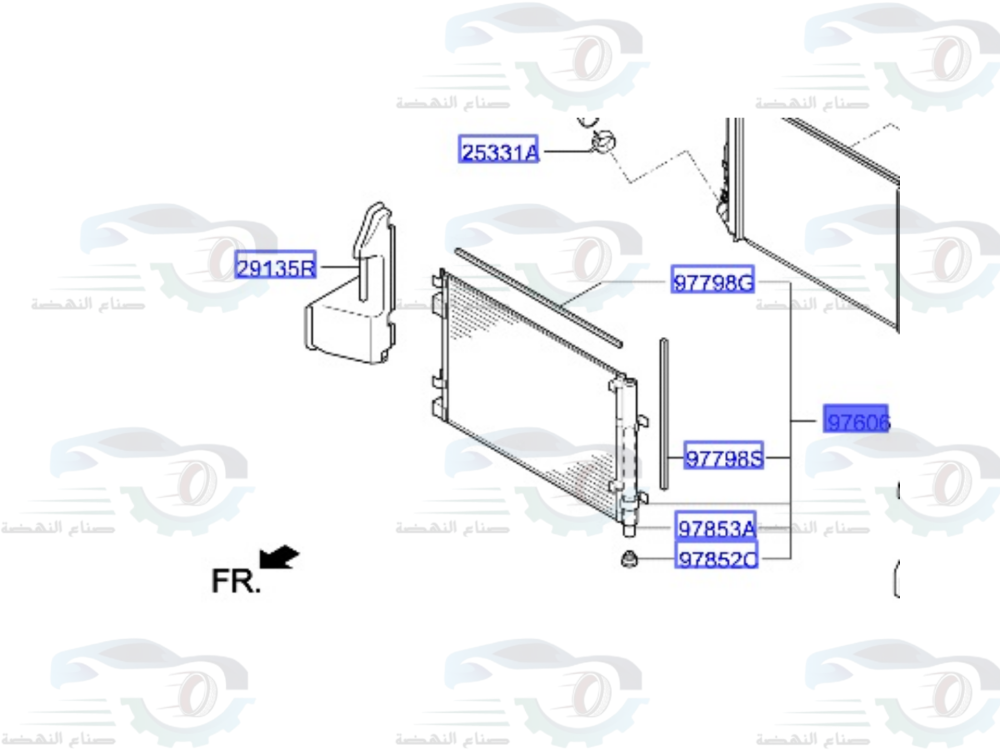The air conditioning radiator in a car's air conditioning system, often known as the A/C condenser, is a vital component that dissipates the heat absorbed from inside the car to the outside environment:
Air conditioner radiator specifications:
- Country of Origin: Korea
- Product Brand: DOOWON
- Product Number: 97606-1R000K
- Compatible models: Hyundai Accent
Location and shape:
- It is located at the front of the vehicle, just behind the front grille (usually in front of the vehicle's main engine radiator).
- It looks like an engine radiator, but is specially designed to withstand the high pressures of an air conditioning system.
- It consists of a network of microtubes (fins) connected to inlet and outlet boxes, and is usually made of aluminum for efficient heat transfer.
Main function:
- Converting hot refrigerant gas to liquid:
- The refrigerant gas (Freon) reaches the radiator after being compressed by the compressor and absorbing heat from inside the car via the refrigerator.
- As it passes through the radiator pipes, its high heat is dissipated by the outside airflow (from the movement of the car or the cooling fan), changing it from a hot gaseous state to a cold liquid.
How it works with other air conditioning components:
- Closed loop:
- Hot refrigerant gas (from compressor) → radiator (loses heat, turns into liquid) → expansion valve → evaporator (absorbs heat from cabin) → returns as gas to compressor.
- The radiator's crucial role: without heat dissipation here, the gas won't turn into a liquid, which thwarts the entire cooling process.
Common causes of failures:
- Clogged fins: caused by dust, insects, or leaves, which reduces cooling efficiency.
- Refrigerant leakage: due to corroded pipes or damaged connections.
- Fin deformation: caused by hitting stones or road debris.
- Rust or corrosion: especially in humid or salty areas.
Signs of radiator damage:
- Poor air conditioner cooling even after gas charging.
- Abnormally high pressure in the air conditioning system.
- Visible oil or gas leak under the front of the vehicle.
- Chemical smells when the air conditioner is on.
Preventive maintenance:
- Clean the fins regularly: with an air hose or soft brush to remove debris.
- Check for leaks: During routine maintenance.
- Radiator protection: Avoid minor collisions that may deform it.
For all your Hyundai spare parts needs, click here.


